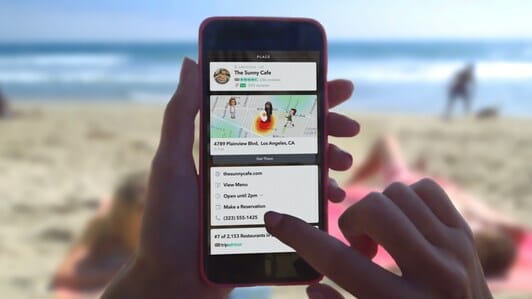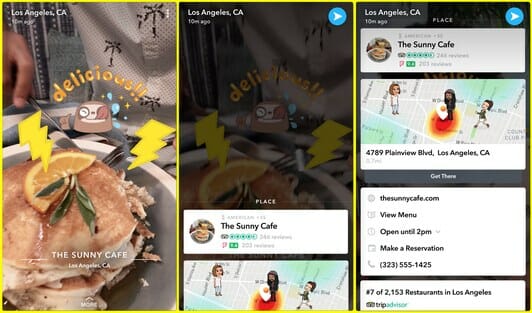Earlier this month, Snapchat released its newest feature, Snapchat Context Cards. According to Snap Inc., Context Cards display additional information about a Snap you’re viewing, making it easier for consumers to connect to the places that interest them.
If you’re not familiar with Snapchat, you probably should be. One of the newest social media channels on the scene, Snapchat is an all-mobile, instant gratification photo and video sharing app that lets users share videos that disappear after being viewed or create stories that last for 24 hours or longer.

Free Guide: Need Help Getting Social?
We’ll show you how to set the right goals for your social media platforms so you can grow your following and draw new customers in.
Save NowWant to know more about who uses Snapchat? Here are the basics.
The Average Snapchat User
- 71% are under 34 years old
- 45% are between 18-24 years old
- 70% are female
Snapchat Usage Stats
- 173 million average daily active users
- 1 million Snaps created daily (photos and videos)
- An average of 30 minutes per day in the app, per user
What Are Snapchat Context Cards?

If you visit our blog often, you know we talk a lot about the importance of managing your business listings online. These are the websites that share information about your business in directory formats, so that when consumers browse online for local information, they can find it fast.
Much like the popular online listing sites, Snapchat Context Cards display businesses’ contact information, hours of operation, directions, and even reviews, maps, tips, and anything else consumers can gather from related Snaps. Snap has even created partnerships with companies like Lyft, Uber, TripAdvisor, OpenTable and Foursquare to offer ride-sharing and reservation-booking services through the application.
How Small Businesses Can Use Snapchat Context Cards
For consumers, Context Cards will help them get better insights and connect more quickly with businesses and local hotspots through the Snapchat app. For local businesses, it will become another way for you to get in front of the mobile, local consumers you want to turn into loyal customers.
First things first, make sure you are actually set up with a Snapchat account for your business. Setup is free and easy, but it’s on you to promote your Snapchat name on other social media accounts and via word-of-mouth marketing, sharing via your username or QR code. Once you’re set up, keep up with your account by posting quick snapshots of your team at work.
Once you’re active on Snapchat, regularly promoting and publishing content, it’s time to get to know its ad tools. They help local business owners like you understand Snapchat’s options for ad campaigns, including how to create geofilters and how to set up full Snap Ads.
How Context Cards Actually Work
Back to the exciting stuff – Context Cards. How does Snapchat choose when to add a consumer’s Snap to your Context Card? Snapchat will pull consumer Snaps into Context Cards from a few places – those shared in local stories, those that add geofilters, or any that appear in Snap Map or Search. That way, it can accurately attribute individual photos and videos to specific locations and businesses.
Picture this: A customer visits your store and takes a photo or video of something they love. (The example Snap gave us below is for The Sunny Café in California, picturing some “delicious” pancakes!) The customer shares a pancake photo opp via Snapchat, incorporating your geofilter on top of the photo. The pic gets incorporated into your Context Card, and suddenly you’ve got a five-star review for your flapjacks within the Snapchat app!

Prepare for Snapchat Context Card Success
I mentioned earlier that Snapchat is now privy to information about local businesses and hotspots thanks to new third party partnerships with some of the most popular online listing sites.
So if you want your Context Card to be an accurate reflection of your business with correct, consistent information for consumers who may be interested in visiting you, your information absolutely has to be correct on these listing sites.
There’s of course the manual way to set up a small business with correct online listings – going site by site and keeping close track of your information. Talk about tedious.
Or there’s a better way – leaving it to the pros to lock down your information for you after you give it to us once. That’s right, once. Curious? Learn more by clicking the button below.





